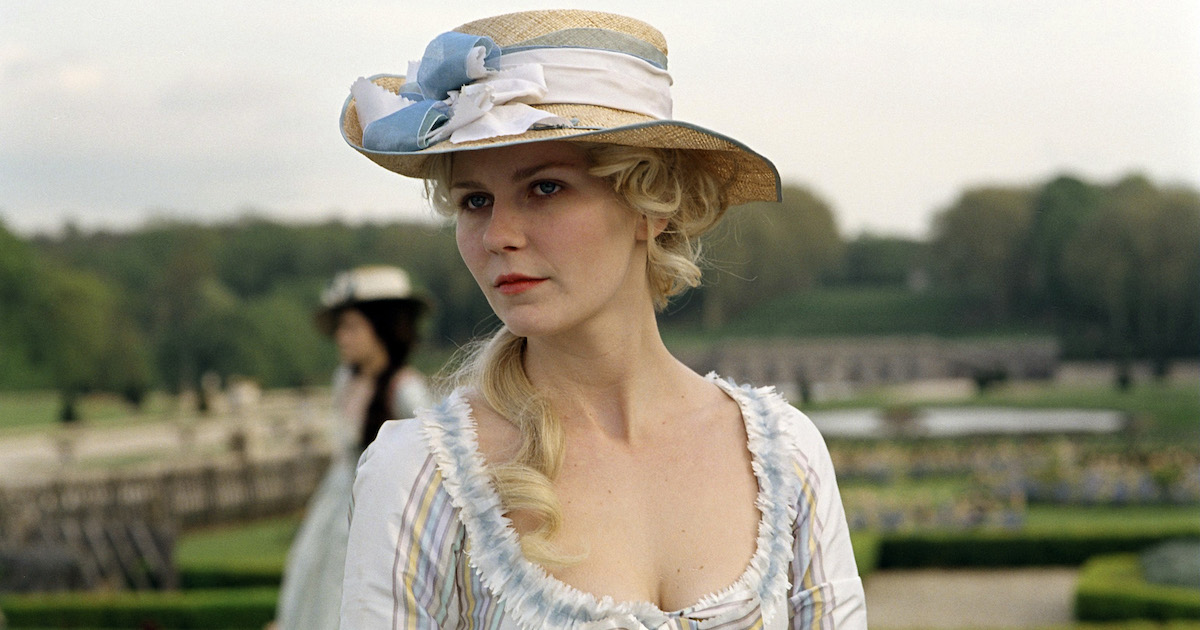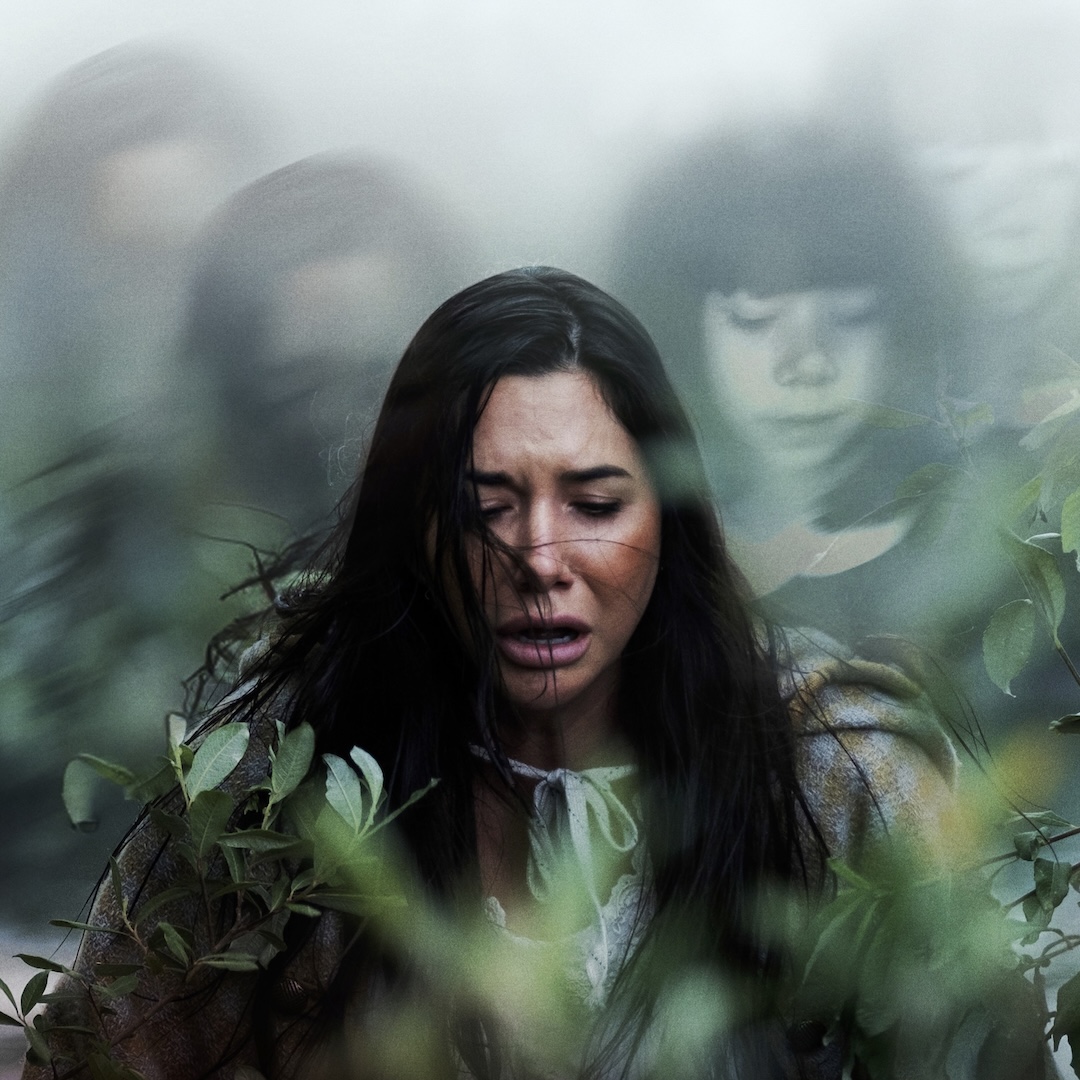Fashion and Film: Alicia’s September Staff Picks
September 15, 2023 By Go BackFew modern art forms are more synchronous than fashion and film. From the inception of the moving image, fashion was a frequent subject of newsreels and short attractions. Yet, both struggled to be taken seriously in the early part of the 20th century, and in many ways, both reached their zenith of legitimacy at the same time. Costume design for film is an art form, pure and simple, and the relationship between film and the fashion runway is a delightfully symbiotic one. In the silent era, studios relied on up-and-coming couturiers to outfit their stars in front of the camera, to distinguish their works from the stage – this is where French designers like Paul Poiret, Elsa Schiaparelli, Coco Chanel stood out.
With the sound era’s ushering in, the film “costume designer” was carved out as a legitimate job title and the major studios claimed their impresarios – names like Adrian, Irene, Orry-Kelly, Walter Plunkett and of course, Edith Head reigned supreme. By the 1950s costume designers worked together with high-end fashion labels, with Yves Saint Laurent, Halston, Givenchy among other sartorial empires contributing greatly to the concept of the “fashionable” film. Costumes tell a story as much as any other element in a film – and in some cases more.
Below are just a few of the costume greatest hits offered on Hollywood Suite!

Hollywood Suite 70s Movies
Cleopatra Jones (1973)
Sep 16 at 9pm ET
With revered fashion model Tamara Dobson in the titular role, you know Cleopatra Jones is going to be a 70s fashion extravaganza! One of the first black fashion models to grace the cover of Vogue, Dobson was a fashion pioneer and her evolution as a Blaxploitation action heroine was a natural progression. In the pre-production phase, Dobson insisted that Italian design mogul Giorgio di Sant’Angelo design every one of her character’s looks. Portraying a CIA agent, Dobson – clothed in Sant’Angelo’s innovative leather and knitwear – is a lethal dose of counterculture fashion that ultimately reinforces the message that black femininity is beautiful and powerful.

Cabaret (1972)
Sep 16 at 10:30pm ET
While costume designer Charlotte Flemming received credit for the outlandish and iconic looks worn by Liza Minnelli as Weimar “It Girl” Sally Bowles, it was the legendary couturier Halston that largely influenced Minnelli’s glam-rock infused flapper stylings. Displeased with Flemming’s costumes, Minnelli flew her trusted confidante Roy Halston to the set of Cabaret, and the two collectively re-designed Sally’s looks, utilizing authentic 1920s costumes found in Berlin’s antiques markets, as well as several signature pieces from Halston’s signature label – including Minnelli’s iconic “Mein Herr” costume. Halston’s role in outfitting Minnelli for Cabaret was only recently discovered upon the occasion of the actress auctioning several costume pieces from the film that features the designer’s label sewn within (as well as concept art never seen drawn in his hand).

The Bitters Tears of Petra von Kant (1972)
Sep 17 at 12:35am ET
Not exactly a flattering portrait of a fashion designer, The Bitters Tears of Petra von Kant sees German provocateur Rainer Werner Fassbinder delve deep into the narcissism and romantic obsession of fashion designer Petra Von Kant, portrayed by the legendary Margit Carstensen. Newly in love with a prospective muse, Petra is driven mad by her obsession with Karin (Hanna Schygulla). A couture chamber piece taking place entirely within its titular character’s bedroom, the film features dozens of mannequins that act as audience surrogates, witnessing the unravelling of the Von Kant’s psyche. Leaning heavy into lamé, metallic harnesses, and silky dressing gowns, the costume designs by the mysterious Maja Lemke – in her singular film credit – are unforgettable.

Hollywood Suite 80s Movies
Batman (1989)
Sep 16 at 9pm ET
While the bat suit featured in director Tim Burton’s Batman may be one of the most iconic superhero costumes of all time, Jack Nicholson’s The Joker is inarguably Gotham City’s most fashionable citizen (and terror). The regality of purple meets the sickliness of a poisonous green in costume designer Bob Ringwood’s creations for Batman’s ultimate foe. While nodding slightly to Caesar Romero’s Joker suit from the 60s television series, Ringwood’s Joker costumes would serve as an urtext of sorts, influencing all Joker outfitting to come—from Heath Ledger to Joaquin Phoenix, and beyond. It also reinforces the concept that in the fight between good and evil, the latter will always win out when it comes to fashion. Best Look: Gotham Museum Joker Painter outfit, complete with silly purple silk beret.

Purple Rain (1984)
Sep 16 at 11:10pm ET
Available on demand in September
After Batman, the reign of purple continues with Prince’s beloved, softly autobiographical glam rock opera. When it came to fashion, Prince never disappointed, and Purple Rain is no exception. Legitimizing Puffy Shirt Pirate Realness, as well as purple leather dusters, the film’s costumes designed by Marie France and Louis Wells became canonical Prince and some of the first images that came to mind when conjuring the beloved musician. Hot tip: don’t sleep on Apollonia’s exquisite performance lingerie!

Scarface (1983)
Sep 17 at 1:05am ET
Al Pacino’s Tony Montana is as quoted in pop culture for his fashion, as he is for his generally offensive one-liners. With revolutionary 1980s suits tailored by the legendary Tommy Velasco, Scarface is a true fashion moment. Re-working the Warner Bros. gangster costumes of the 1930s, Velasco took pinstripes, satins, and three-piece suits to new modern heights. Garish like its protagonist, but never cheap or poorly made, Montana’s suits marked his rise from Cuban refugee street dealer to Miami’s drug kingpin. Even when wearing an arm sling, Pacino wears it with the confidence of someone carrying a Hermès Birkin bag. Equally mesmerizing, if not more so: Michelle Pfeiffer as Elvira and her backless disco wonder dresses designed by Patricia Norris.

Hollywood Suite 90s Movies
The Fifth Element (1997)
Sep 16 at 9pm ET
Available on demand in September
Jean Paul Gaultier – France’s fashion enfant terrible – defined couturier X director collabs with his astounding designs for Luc Besson’s The Fifth Element. Envisioning the future, Gaultier designed for every stratum of society – law enforcement, flight attendants, McDonalds workers, talk-show hosts (Chris Tucker’s Ruby Rhod), taxi drivers (Bruce Willis’s Korben Dallas), intergalactic crime bosses (Gary Oldman’s Zorg), and manic pixie dream aliens (Mila Jovovich’s Leeloo). Gaultier’s designs for the film are iconic – Leeloo’s medical-bandage harness look somehow defined futuristic fashion for the 90s and was emulated on the top runways. The most expensive European film up to that time (released the same year as Titanic), much of the film’s budget (beyond special effects) was allocated to fashion – smart choice.

Casino (1995)
Sep 16 at 11:10pm ET
With a costume budget of a reported $1 million (in mid-90s dollars), designers Rita Ryack and John A. Dunn went to town to outfit Sharon Stone’s iconic mob moll Ginger McKenna. Based on tragic showgirl Geri McKee, Stone’s Ginger is the definition of a rags to riches 70s Cinderella. Fresh off her all-white skirted suit from Basic Instinct, in Scorsese’s Casino, Stone is afforded a tapestry of 1970s and 1980s maximalist opulence. Her recreated Courrèges jacket when disembarking a private jet, exquisite furs, a metal-sequined nude-illusion dress that was so heavy, and so jagged that it cut Stone each time she filmed in it, and hundreds of thousands of dollars in non-period specific BVLGARI jewels – Ginger’s closet was one of cinema history’s most exquisite and expertly conceptualized.

Bram Stoker’s Dracula (1992)
Sep 17 at 2:10am ET
Available on demand in September
Eiko Ishioka was more than a costume designer. She was one of Japan’s most coveted multi-disciplinary art directors – she designed costumes for the Olympics, for Grace Jones’s iconoclastic world tours, for operas and stage productions, and of course for film. Her most revered and cited costume designs, however, were for 1992’s Bram Stoker’s Dracula, directed by Francis Ford Coppola. Earning a well-deserved Oscar win, her costumes from Dracula are singular, surreal, sculptural works that redefined what costume design for film could be. Light on set design, Coppola instead let Ishioka’s romantic, yet terrifying costumes take centre stage. The end result was a mesmerizing collection of Gothic artworks that have since the film’s debut, toured around the world as the definitive masterworks in textile design for film, and, even most recently, inspired an officially-licensed ready-to-wear fashion line.

Hollywood Suite 00s Movies
Pride & Prejudice (2005)
Sep 16 at 9pm ET
Joe Wright’s Pride & Prejudice represented a re-interpretation of Jane Austen’s beloved and oft-adapted work for the twenty-first century. And therefore, his film’s costumes exist as a kind of re-imagining of all the Bennets who came before, from the 1940s to the beloved 90s BBC mini-series. Working with celebrated designer Jacqueline Durran, Wright wanted to leave behind the traditional, yet unflattering empire waist that every previous classic Austen adaptation leaned into. Instead, Wright and Durran had the epiphany that while the empire waist reigned supreme at the time of the book’s publication in 1813, it was written by Austen nearly twenty years prior in the late 18th century, years before the empire waist was popularized. The twenty-year-old iconoclast Elizabeth Bennet was the same age as Austen when she conceptualized her, so Wright and Durran took the costumes back to the time when Austen wrote Pride and Prejudice. The result was flattering, natural waistlines, historical accuracy, and ultimately a masterstroke in period costume design, which earned Durran an Academy Award nomination.

Carol (2015)
Sep 16 at 11:10pm ET
With fifteen Academy Award nominations and three wins behind her, Sandy Powell OBE is costume design’s true power player – a luminary who throughout her five-decades career has continually pushed the boundaries of costume design for film. With Carol, Powell re-teamed with director Todd Haynes, whom she had previously worked with on the glam-rock opera The Velvet Goldmine and the fashionably splendorous Far From Heaven, set in the 1950s. For Carol, Powell would return to the mid-century for a story of two women in love during an era of repressiveness and persecution. Because their relationship is hidden from those around them, their clothing had to reveal more about their emotions than their words. Powell worked class difference, as well as generational difference into Carol and Therese’s costume, with the former wearing assured high fashion looks, and the latter, more muted, demure, and schoolgirlish. This is some of the best use of mid-century plaid in any film.

Marie Antoinette (2006)
Sep 17 at 1:10am ET
Available on demand in September
The ultimate fashion film directed by a vanguard director with sartorial expertise, Marie Antoinette is pure opulence, pure indulgence, and pure artistry when it comes to costume design. Working with the famed Tirelli costume house and sourcing 18th century historical fabrics and lace, director Sophia Coppola leaned on veteran designed Milena Canonero to bring her historical, pop culture-infused epic to the big screen. Using a candy-coated palette inspired by Ladurée’s beloved confectionaries, Canonero designed less for historical accuracy and more for the youthful vibe Coppola want to infuse within her biopic. Over 70 exquisite gowns were designed to be worn by Kirsten Dunst as Marie Antoinette. Canonero even borrowed from her previous work on Kubrick’s Barry Lyndon for the costumes worn by Rose Byrne’s character. Over $4 million in Fred Leighton jewels are featured in the film (including some worn by a very luxuriant pug).
The now iconic “I Want Candy” shopping spree montage features several pairs of handmade shoes by Manolo Blahnik, who took his design task to heart, obsessively researching 18th century footwear to master the film’s stunning works of art (several pairs used in the film are now within the collection of the MET). But perhaps most infamous are the lavender Converse sneakers that Coppola gives just a quick glimpse of (they belonged to Dunst’s stand-in). Brazenly anachronistic, the one-second shot caused an outrage when the film was released, but now those shoes represent a kind of war cry for not treating subjects such as this so academically, but rather to have fun with everything, including “historical” costume.












 Follow us on Instagram
Follow us on Instagram